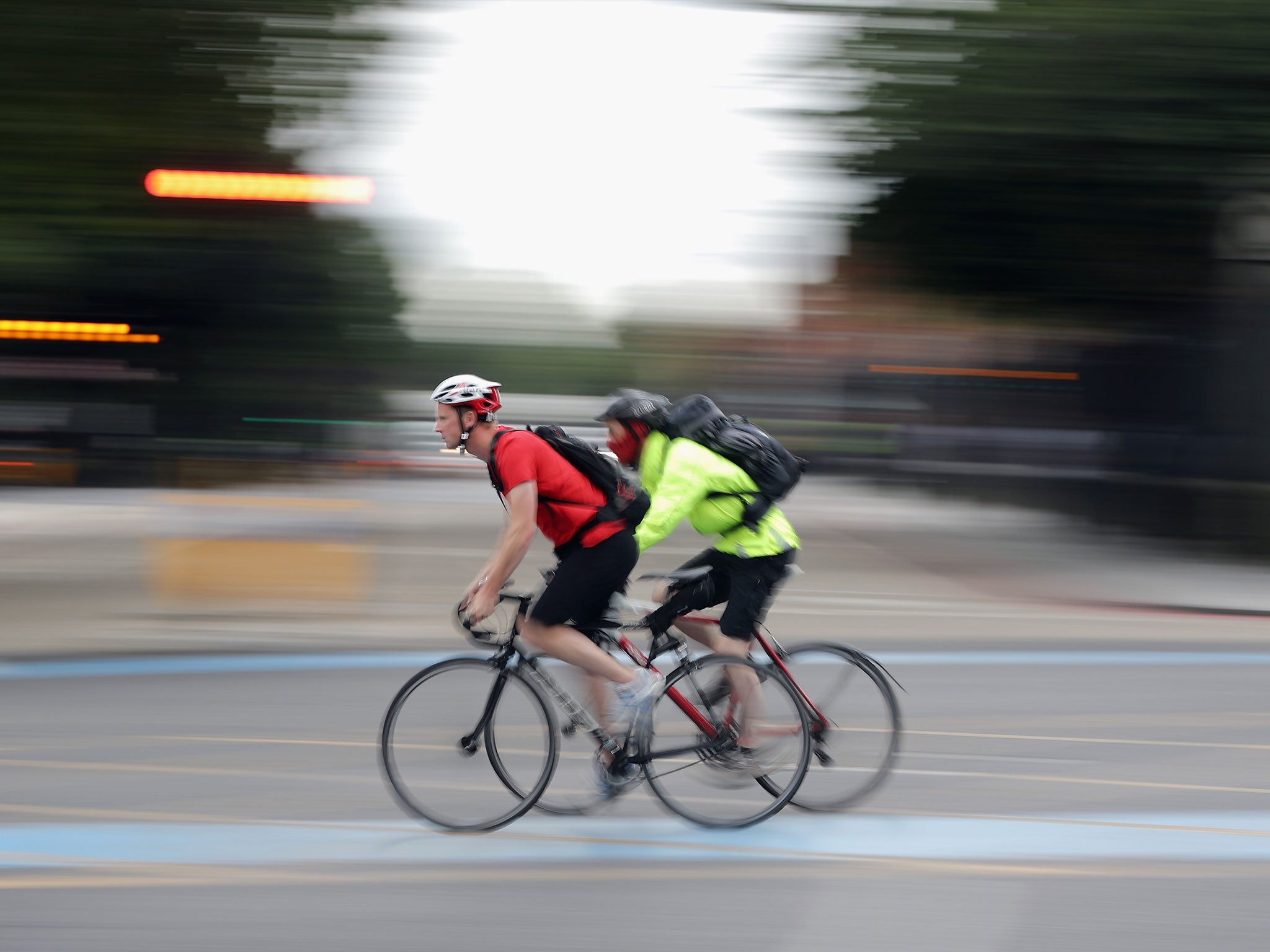Government to consider forcing all cyclists to wear a helmet
Transport minister Jesse Norman said issue will be considered 'based on the evidence'

Your support helps us to tell the story
From reproductive rights to climate change to Big Tech, The Independent is on the ground when the story is developing. Whether it's investigating the financials of Elon Musk's pro-Trump PAC or producing our latest documentary, 'The A Word', which shines a light on the American women fighting for reproductive rights, we know how important it is to parse out the facts from the messaging.
At such a critical moment in US history, we need reporters on the ground. Your donation allows us to keep sending journalists to speak to both sides of the story.
The Independent is trusted by Americans across the entire political spectrum. And unlike many other quality news outlets, we choose not to lock Americans out of our reporting and analysis with paywalls. We believe quality journalism should be available to everyone, paid for by those who can afford it.
Your support makes all the difference.Compulsory helmets for cyclists in the UK may be brought in following a Government review on bike safety.
The consultation, announced following a series of high-profile incidents involving cyclists, will examine a raft of potential measures.
Transport minister Jesse Norman said the mandatory wearing of helmets will be considered, although this will not be its sole focus.
He tweeted the issue was “sure to be raised in the consultation” and will be considered “based on the evidence” but added there was no current plan to introduce compulsory helmets.
Speaking at the Cycling + Walking Innovations 2017 conference, an event sponsored by the Department for Transport, Mr Norman said the consultation in the new year would be a “wider and more embracing look at how safety can be improved for cyclists and other road users in relation to cycling”.
“That could be infrastructure, education, signage and other things which could contribute to a successful and effective transition to a world in which walking and cycling are enormous,” he said.
A Sunday Times correspondent asked: “Do you wear hi-vis and a cycle helmet when cycling and do you think they should be compulsory?”
Mr Norman replied: “I have made it perfectly clear in previous conversations that I don’t take a position on hi-vis or helmets. That is something in relation to the Cycle Safety Review where we will see what the evidence and the submissions say.
“If you want to have a society where a 12-year-old can get on a bicycle it’s a serious issue as to whether you’re going to mandate hi-vis or helmets and there will be many arguments about whether the safety benefits outweigh or do not outweigh the deterrent effect that might have on people cycling. So we’re going to leave that to the review.”
A total of 102 cyclists died on Britain’s roads in 2016, with a further 3,397 seriously injured, according to figures released by the Department for Transport.
The Government consultation, announced back in September, will be in two phases.
The first phase will look at the case for creating a new offence equivalent to causing death or serious injury by careless of dangerous driving to help protect both cyclists and pedestrians.
The second phase will be a wider consultation on road safety issues related to cycling and will consider the rules of the road, public awareness, signage for road users and safety risks, including whether helmets should be compulsory.
Some cycling organisations argue making helmets a legal requirement is ineffective as a safety measure.
A 2015 study by the University of Toronto and the University of British Columbia found there is no link between compulsory bicycle helmets and head injuries.
The research analysed hospitalisation rates against jurisdictions in Canada that required cyclists to wear helmets by law and those that didn’t.
Sam Jones at Cycling UK told The Independent: “There is no justification for making helmet-wearing compulsory: it could undermine levels of cycle use and, in any case, the effectiveness of helmets is not the black and white issue many think it is.
“Enforced helmet laws in other countries reduce the number of people cycling, and as would be expected the number of injuries drop similarly.”
Mr Jones said one of the best ways to make conditions safer would be for the Government to “roll out national design standards for cycling infrastructure”.
“This would put an end to dangerous cycling lanes being built, and would mean there would be consistency in safety and design for segregated routes from Cornwall to Northumberland.”
He added that Cycling UK believes it would be “irresponsible to state or even imply that hi-vis helps make cyclists safer in a detectable way”.
“It might make cyclists feel or think they’re safer, but the un-evidenced assumption that it will actually make them safer worries us,” Mr Jones said.
“We don’t want anyone to be lulled into a false sense of security by hi-vis, especially as we know that cyclists have been injured and killed whilst wearing it.
“There is a distinction between “hi-vis” and ‘retroflective’ material,” he explained.
“Research suggests that ‘retroreflective’ material - which light bounces off in the dark - does help catch drivers’ eyes, particularly if it’s in motion like ankle bands on pedalling cyclists."
Join our commenting forum
Join thought-provoking conversations, follow other Independent readers and see their replies
Comments